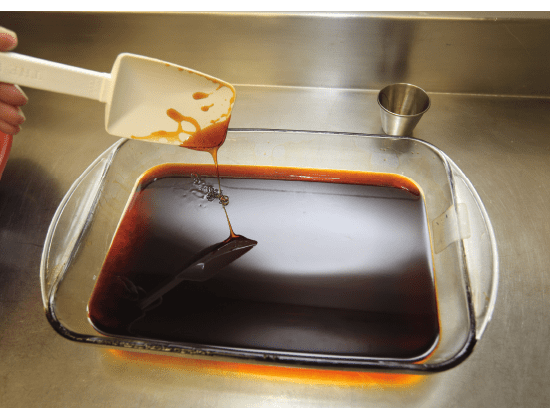Cultivation is about a lot more than just harvest yields and THC content. In this rapidly changing and regional marketplace, entourage effects, flavor, and aroma are major factors in building your reputation and loyal customer base. As your farm grows, offering a wide range of value-added products will appeal to a wider range of customers and preferences in style of consumption. You’ll also want those products to reflect and elevate the qualities that make your flower special.
ENTER: CO2 EXTRACTION
First, what is an extract? Extracts, in the simplest terms, contain the active components of a plant in concentrated form. As a general rule, most extraction processes use a solvent such as water, alcohol, or hydrocarbons and the application of heat and pressure to dissolve the target active substances. Brewing coffee and tea are the most familiar forms of extraction in our day- to-day lives. On the commercial side of the cannabis industry, extraction refers to the concentration of major and minor cannabinoids (phyto-cannabinoids) and terpenes, usually as a vapable oil or dab, similar to essential oils derived from other plants, such as lavender.
In CO2 extraction, carbon dioxide gas is heated and pressurized until the gas becomes a supercritical fluid, allowing it to pass through solids like a gas while dissolving materials like a liquid. The supercritical CO2 fluid is passed through the ground plant matter, extracting the essential oils (THC, cannabinoids, and terpenes) which are dropped out of suspension as the CO2 moves out of the pressurized vessel and into a cooler, returning to its gaseous state. The CO2 is then typically recirculated through the process again, creating a closed-loop system. Most CO2 machines are able to recapture most of the CO2 used, meaning there are few, if any, emissions from the process.
CO2 extraction differs from other common cannabis extraction methods primarily in the nature of the solvent, which is a good thing. Other forms of cannabis extraction use flammable, toxic hydrocarbons such as propane or butane which can leave potentially harmful residues in the end product. Moreover, hydrocarbon facilities have been scrutinized for worker- and community-safety concerns, as these facilities use highly flammable substances under pressure, causing several high-profile explosions related to these processes. Unlike these hydrocarbon-based systems, CO2 is non-flammable and does not pose a human health risk. If you’ve worked hard to maintain high organic standards for your farm, CO2 extraction can ensure no toxic chemicals are added during processing.

While overall yield can be slightly lower than other extraction processes, CO2 extraction tends to preserve a larger quantity of the terpenes and phytocannabinoids that bring out the great smell and taste in your flower. A good CO2 extractor can produce THC,
phytocannabinoids, and terpene profiles very similar to what you see in your flower testing. CO2 processing is also gentler than other processes, leaving chlorophyll and other unwanted plant material that can cloud and discolor extracts in the spent material, but not your product.
That’s all great news. But, unlike other extraction or distilling processes, there’s no real small-scale, do- it-yourself path to CO2 extraction. These are serious machines that, like distilling alcohol, require real craft processors with years of experience to make a quality product. And the price tag? Figure a quarter-million buy-in for equipment before you even think about your lab-grade facility. So, what’s the solution? Many farms partner with CO2 brands, selling their product wholesale to companies that showcase and promote the farms they source their material from. Others use toll processors (processors for hire) to craft a product unique to them that they can sell under their farm’s own brand name.
If you have beautiful-tasting flower and are thinking about having your material processed by or selling to CO2 processors, there are some things to keep in mind when choosing and preparing flower. Everyone wants to maximize profit, so start by utilizing your waste streams. Trim, loose kief, and lower-grade buds are all great options for processing material, as are untrimmed buds, blends made from small or experimental batches, and potent, but not pretty, patches. Whatever you choose, be sure you remove large stems and water leaves. Stems contain a lot of waxes and not much else, so, if you’re paying a per-pound rate for processing or looking to impress a processing client with high yields, make sure that everything that goes into the process will result in yield out.
To maximize flavor and preserve your entourage effects, choose strains and material that show a broad range of cannabinoids and terpenes in testing and are free of pesticides and molds (which can feed on oils). Then, make sure your product is dried, not fresh frozen. Fresh frozen works for some processes, such as butane, but the high water content retained by the plant during freezing doesn’t work with CO2 extraction. After you’ve dried your product well, store it at room temperature in low light conditions to preserve the terpenes you’ve worked so hard to produce in your flower.

